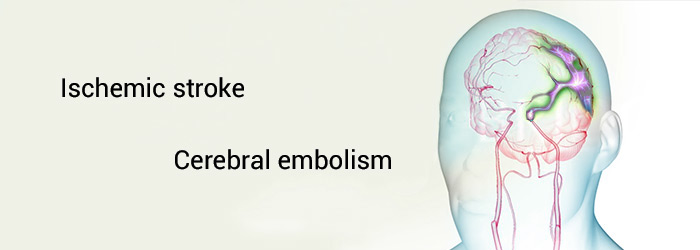Post-Stroke Motor Recovery and Neuroplasticity

Stroke is one of the most common diagnoses encountered in rehabilitation. A common deficit experienced by individuals with stroke is hemiparesis and a large amount of time in therapy is spent on motor rehabilitation.1,2
Therapy-Induced Neuroplasticity
In the mid-1990s, Nudo and colleagues3 clearly showed that motor rehabilitation was critical for facilitating improvements in motor control after stroke and that this improvement was associated with therapy-induced neuroplasticity in the motor system.
The remaining questions are – what the motor rehabilitation should look like, how much should be provided, when it should be provided, and what the schedule should be. Although limited research has looked into these questions, some studies have shed light on a flurry of intervention development and when therapy should be provided.
Most research suggests motor rehabilitation should begin early, but no intervention approach stands out clearly above the others. What is clear, instead, is that motor rehabilitation needs to conform to basic principles for facilitating neuroplasticity that have been discovered based on basic animal research. Principles of neuroplasticity include: use it or lose it, repetition, practice early, practice skilled tasks, and attend to the practice.4
Use It or Lose It
After stroke, individuals tend to rely on their nonparetic limb, excluding the paretic limb. When the paretic limb is not used, its neural representation shrinks and its ultimate recovery is delayed.3,5 If the paretic limb is used at least some of the time, it appears that the reduction in recovery is not experienced.6 Therefore, all individuals with stroke should be encouraged to use their paretic limb, if possible.
Repetition
Promoting neuroplasticity and improving motor function takes repetitive practice. Practice that provides too few repetitions fails to promote neuroplasticity and reduces long-term motor gains.7,8 Because current therapy is limited in the amount of time that can be spent with a client and only on motor rehabilitation, therapists should develop strategies to assist clients with practice on their own.
Practice Early
The largest gains in motor recovery are experienced when motor rehabilitation begins early after stroke.9Thus, as early as possible, individuals with stroke should engage in motor rehabilitation. However, it is not clear how early the therapist should introduce intensive motor practice. Some studies have found increases in lesion size and reduced motor recovery with intense repetitive practice compared to more moderate practice in early rehabilitation.10, 11
Practice Skilled Tasks
Motor practice should consist of skilled task practice that is challenging. Practicing simple movements – that are already easily accomplished – does not facilitate neuroplasticity.8
Attend to the Practice
Lastly, individuals with stroke need to pay attention to what they are practicing, at least early in the training, as distraction results in less neuroplasticity.12 Therapists should reduce conversation with the individual during practice and remove distractions from the therapy environment.
Thus, as current evidence cannot definitively establish the best interventions for promoting neuroplasticity and motor recovery, therapists should choose an approach consistent with the principles of neuroplasticity: the early use of the paretic limb, a lot of repetitive practice (although perhaps more moderate amounts of repetition very early), practice of skilled tasks, and minimal distractions during practice.
- Richards L, Latham N, Jette D, Smout R, DeJong G, Horn, S. Characterizing Occupational Therapy Practice in Stroke Rehabilitation. ArchPhys MedRehabil 2005;86: S51-S60.
- Latham NK, Jette DU, Slavin M, Richards LG, Procino A, Smout RJ, Horn SD. Physical therapy during stroke rehabilitation for people with different walking abilities. Arch Phys Med Rehabil 2005;86:S41-S50.
- Nudo R, Wise B, SiFuentes F, Milliken G. Neural substrates for the effects of rehabilitative training on motor recovery after ischemic infarct. Science, 1996;272:1791-1794.
- Kleim J, Jones T. Principles of experience-dependent neural plasticity: implications for rehabilitation after brain damage. J Speech Lang Hear Res 2008; 51: S225-239.
- Allred R, Cappellini C, Jones T. The "good" limb makes the "bad" limb worse: experience-dependent interhemispheric disruption of functional outcome after cortical infarcts in rats. Behav Neurosci, 2010;124: 124-32.
- Kerr A, Wolke M, Bell J, Jones T. Post-stroke protection from maladaptive effects of learning with the non-paretic forelimb by bimanual home cage experience in C57BL/6 mice. Behav Brain Res 2013;52: 180-187
- Luke L., Allred R, Jones T. Unilateral ischemic sensorimotor cortical damage induces contralesional synaptogenesis and enhances skilled reaching with the ipsilateral forelimb in adult male rats. Synapse 2004;54: 187-99
- Kleim J, Hogg T, Vandenberb P, Cooper N, Bruneau R, Remple M. Cortical synaptogenesis and map reorganization occur during late, but not early, phase of motor skill learning. Journal of Neurosci 2004;24: 628-633
- Biernaskie J, Chernenko G, Corbett D. Efficacy of rehabilitative experience declines with time after focal ischemic brain injury. J Neurosci 2004;24:1245-1254
- Leasure L, Schallert T. Consequences of forced disuse of the impaired forelimb after unilateral cortical injury. Behav Brain Res 2004;150:83-91
- Dromerick AW, Lang CE, Birkenmeier RL, Wagner JM, Miller JP, Videen TO, Powers WJ, Wolf SL, Edwards DF. Very Early Constraint-Induced Movement during Stroke Rehabilitation (VECTORS): A single-center RCT. Neurol. 2009;73:195-201
- Stefan K, Wycislo M, Classen J. Modulation of associative human motor cortical plasticity by attention. J Neurophysiol 2004;92: 66-72.









